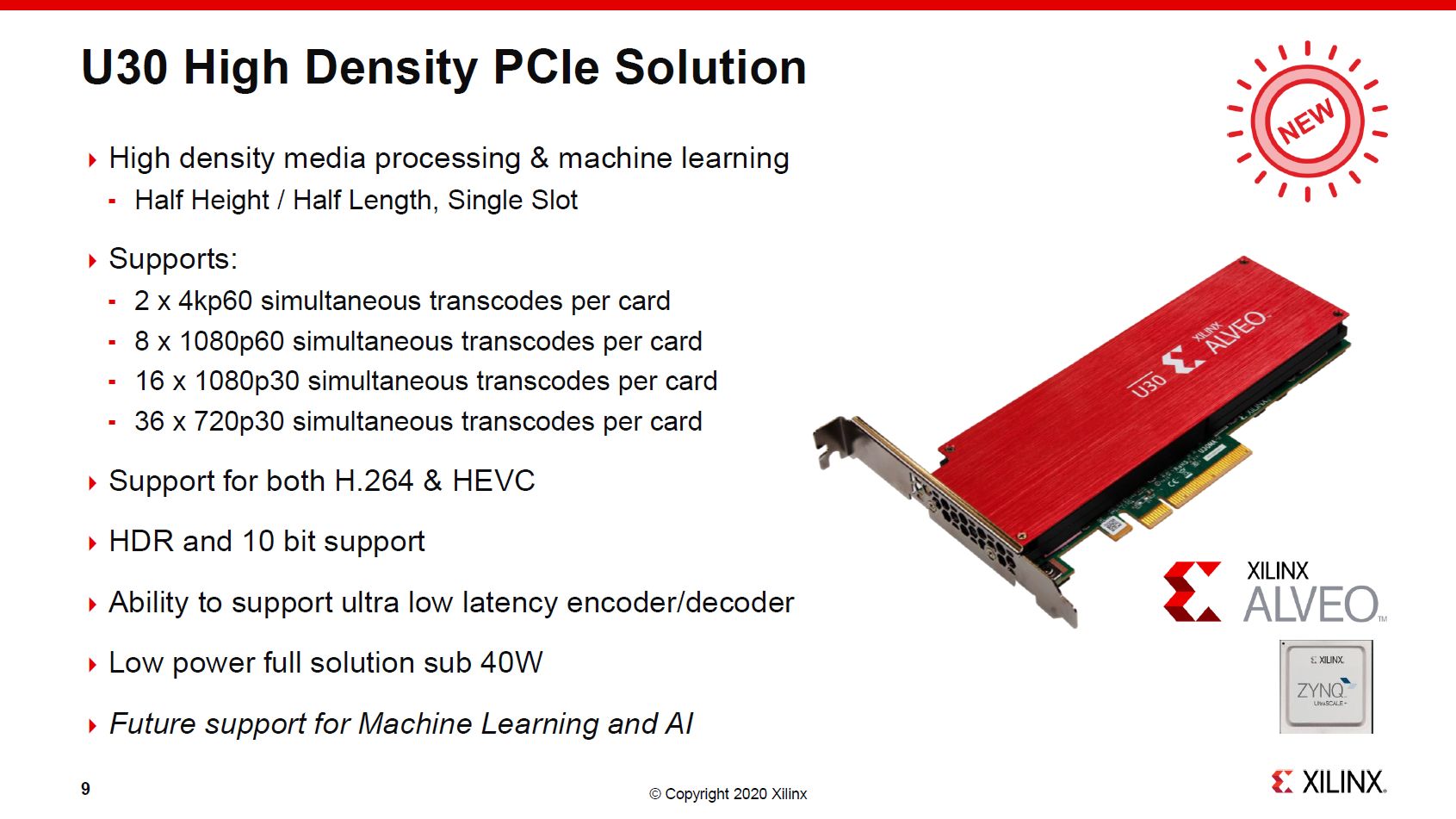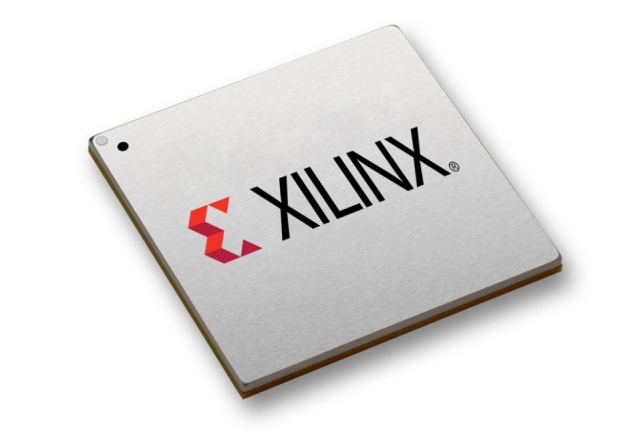Global demand for video content has been rapidly increasing and has the major audiences of internet and mobile network traffic. Over-the-top streaming services such as Twitch continue to see an explosion of content creators seeking live delivery with great image quality, while live event broadcasters are increasingly looking to embrace agile cloud infrastructure to reduce costs without sacrificing reliability and efficiently scale with demand.
Twitch is a big customer of Amazon Web Services as gaming video transcoding takes a log of resources, and the Alveo U30 media accelerator card can take that load.
Amazon announced the general availability of Amazon EC2 VT1 instances that feature the same Xilinx® Alveo™ U30 media accelerator transcoding cards used in the SDK.
The Amazon VT1 instances are designed to provide the best price-performance for multi-stream video transcoding with resolutions up to 4K UHD. The Alveo U30 cards provide accelerated H.264/AVC and H.265/HEVC codecs and up to 30 percent better price per stream compared to the latest GPU-based EC2 instances and up to 60 percent better price per stream compared to the latest CPU-based EC2 instances.
These instances are first in the cloud to feature hardware accelerators purpose-built to support live video transcoding. The new EC2 VT1 instances build on the continuing success of EC2 F1 instances, which were first in the cloud to offer FPGA-based hardware acceleration on an easy to use, pay-as-you-go usage.
Third-party customers
Customers with their own live broadcast and streaming video pipelines can use VT1 instances to transcode video streams with resolutions up to 4K UHD. VT1 instances feature networking interfaces of up to 25 Gbps that can ingest multiple video streams over IP with low latency and low jitter. This capability makes it possible for these customers to embrace scalable, cost-effective, and resilient infrastructure fully.
Amazon EC2 VT1 Instance Type
EC2 VT1 instances are available in three sizes. The accelerated H.264/AVC and H.265/HEVC codecs are integrated into Xilinx Zynq ZU7EV SoCs. Each Xilinx® Alveo™ U30 media transcoding accelerator card contains two Zynq SoCs.
|
Instance size |
vCPUs |
Xilinx U30 card |
Memory |
Network bandwidth |
EBS-optimized bandwidth |
1080p60 Streams per instance |
|
vt1.3xlarge |
12 |
1 |
24GB |
Up to 3.12 Gbps |
Up to 4.75 Gbps |
8 |
|
vt1.6xlarge |
24 |
2 |
48GB |
6.25 Gbps |
4.75 Gbps |
16 |
|
vt1.24xlarge |
96 |
8 |
192GB |
25 Gbps |
19 Gbps |
64 |
The VT1 instances are suitable for transcoding multiple streams per instance. The streams can be processed independently in parallel or mixed (picture-in-picture, side-by-side, transitions). The vCPU cores help with implementing image processing, audio processing, and multiplexing. The Xilinx® Alveo™ U30 card can simultaneously output multiple streams at different resolutions (1080p, 720p, 480p, and 360p) and in both H.264 and H.265.
Each VT1 instance can be configured to produce parallel encoding with different settings, resolutions, and transmission bit rate (“ABR ladders“). For example, a 4K UHD stream can be encoded at 60 frames per second with H.265 for a high-resolution display. Multiple lower resolutions can be encoded with H.264 for delivery to standard displays.
Available Now
Amazon EC2 VT1 instances are now available in the US East (N. Virginia), US West (Oregon), Europe (Ireland), Asia Pacific (Tokyo) Regions. To learn more, visit the EC2 VT1 instance page.
Get Started with EC2 VT1 Instances
One can now launch VT1 instances in the Amazon EC2 console, AWS Command Line Interface (AWS CLI), or using an SDK with the Amazon EC2 API.
If you are interested in getting started with EC2 VT1 instances, you can find more details here.




